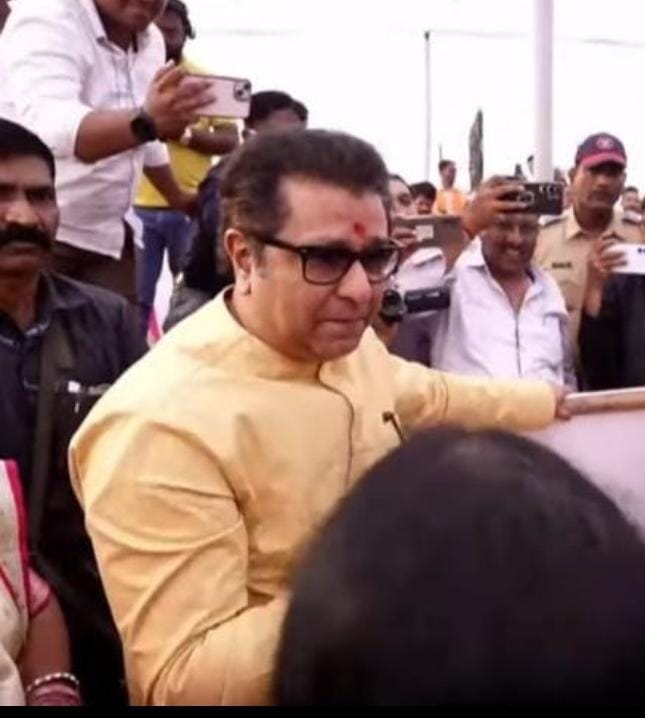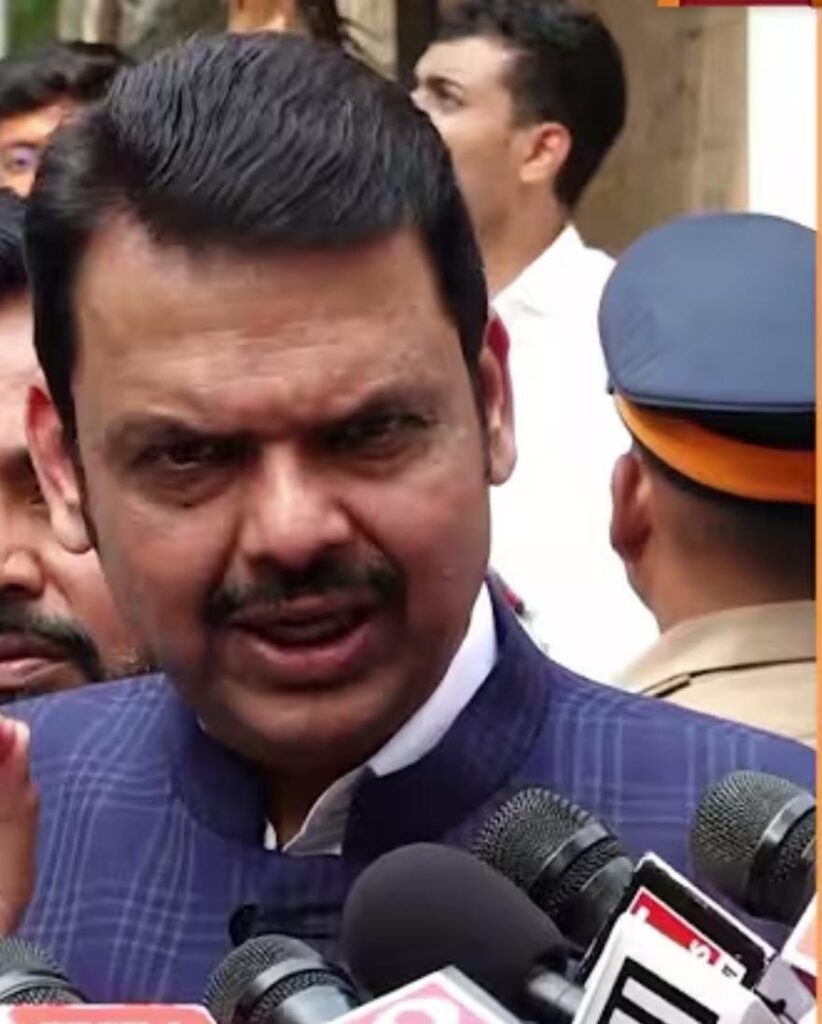

In the name of NEP 2020, the Maharashtra government’s ambiguous stance on Hindi stokes political dissent, cultural anxiety, and historical unease in a multilingual state already reeling from the neglect of its own tongue .
The Maharashtra government recently issued a directive mandating Hindi as the “generally” applicable third language in Marathi and English medium schools from Classes 1 to 5. Within days, facing mounting criticism, the government issued a corrigendum clarifying that Hindi is not mandatory. Students may opt for another Indian language if at least 20 per grade make such a request — in which case the state promises to provide teachers or online instruction.
This policy U-turn, though officially procedural, has sparked a deeper debate about language, identity, and power. The issue has grown larger than curriculum. For many in Maharashtra, it represents the tension between the autonomy of regional identities and the perceived push for a homogenised, Hindi-centric national culture.
The Three-Language Tightrope
The revised directive stems from Maharashtra’s implementation of the State Curriculum Framework for School Education 2024, in alignment with the National Education Policy (NEP) 2020. Unlike its 1968 predecessor, which prescribed Hindi, English, and a regional language, NEP 2020 is designed to offer flexibility and cultural sensitivity. It urges the teaching of three languages, of which at least two must be Indian.
However, as the GR currently reads, Hindi is positioned as the default third language — unless parents or students mobilise in sufficient numbers to demand an alternative. This conditionality transforms linguistic choice into a bureaucratic challenge, subtly shifting the burden of cultural preservation onto already overstretched communities.
Congress State President Harsh Vardhan Sapkal articulated this unease, stating, “Just changing the wording of the government resolution doesn’t change its essence.” Similarly, MNS chief Raj Thackeray dismissed the clarification, asserting that Hindi is not the national language, but merely one of several regional languages. He accused bureaucratic pressure from “certain officials” of driving this agenda, even urging headmasters to resist implementation.
Neglecting Marathi, While Promoting Hindi?
Beneath the Hindi-versus-regional-language debate is the simmering frustration over the state’s own apathy toward Marathi. The closure of Marathi-medium schools and the incentivisation of high-fee English-medium institutions — often of questionable quality — has eroded Marathi’s status in its own land. This perceived neglect adds a layer of insult when Hindi is aggressively promoted in the name of “national unity”.
At the forefront of this protest is Deepak Pawar, professor of political science at the University of Mumbai’s Kalina campus. His voluntary organisation has campaigned for years against the marginalisation of Marathi through publications, seminars, and grassroots mobilisations. Pawar and his colleagues argue that the promotion of Hindi under NEP 2020 is not neutral policy, but veiled cultural imposition.
Indeed, the NEP’s call for linguistic pluralism rings hollow when implementation skews in favour of one language. That Maharashtra has to explicitly clarify that Hindi is not mandatory points to the slippery slope of such “recommendations”.
Lessons from East Pakistan: When Language Becomes Political
The anxieties surrounding Hindi’s growing official presence are not paranoid fantasies. South Asia’s own history warns us that forced linguistic imposition can carry explosive consequences. A pointed reminder comes from the 1952 student agitation in East Pakistan, now Bangladesh, against the imposition of Urdu. That uprising — culminating in the police firing on Dhaka University students — was a pivotal moment that eventually fractured Pakistan and led to the birth of a new nation.
Strangely, this linguistic revolution is often underplayed in academic and policy circles. Linguist and JNU professor Ayesha Kidwai, for instance, in a lecture to students on nationalism, made only passing reference to the 1952 killings. The event, now marked as International Mother Language Day by UNESCO, deserves more than a footnote in lectures from India’s premier institutions.
That agitation started with Mohammad Ali Jinnah’s 1948 declaration at Dhaka University that Urdu “shall be the sole national language of Pakistan” — branding Bengali advocates as traitors. Such linguistic absolutism was not just an administrative blunder; it sowed deep cultural resentment and, eventually, national rupture. Progressive thinkers in Pakistan now openly acknowledge these mistakes. As India stares at similar centralising tendencies, the past casts a long shadow.
Between Identity and Demography
Adding complexity to Maharashtra’s language debate is the state’s evolving demographic reality. The growing influx of North Indian workers — particularly in urban pockets — has generated both cultural assimilation and political tension. In many suburbs, their increasing electoral significance has altered power equations, further fuelling perceptions of North Indian hegemony.
In this charged atmosphere, any official preference for Hindi is bound to be read not merely as policy, but as politics — especially when it dovetails with the broader narrative of “One Nation, One Culture”. Scholar Apoorvanand recently noted in an interview with Kunal Kamra that the current Hindi push is not innocent; it reflects an ideological project of linguistic nationalism.
Ironically, even within the so-called “Hindi belt”, linguistic diversity abounds — from Awadhi to Bhojpuri to Maithili. But the census flattens these differences under the umbrella of “Hindi”, feeding the illusion of linguistic homogeneity. This census logic is now extending into education, shaping state policy.
Compulsion vs. Consensus: A Better Way Forward
Many older citizens recall voluntarily learning Hindi in their youth, including through institutions like the Rashtra Bhasha Prachar Samiti. It’s not the language, but the compulsion, that grates. India is a country where multilingualism is not just a cultural feature — it’s a daily reality. People routinely speak and think in multiple tongues.
In today’s digital age, language technology — from translation apps to multilingual educational platforms — makes it easier than ever to coexist linguistically. A common language, if one must emerge, should do so organically, not by decree. Historically, this has happened before. In places like Lucknow, Hindustani emerged as a natural, inclusive lingua franca through shared cultural experience, not administrative enforcement.
Educational policies must allow children to develop intellectually in the language they are most comfortable with. This is not only sound pedagogy — it’s basic human dignity. Only through voluntary, respectful interaction can a shared language of communication and unity evolve.
More Than Just a Language Debate
Maharashtra’s recent directive on Hindi, though modest in scope, has cracked open a deeper conversation about identity, power, and democratic values in Indian education. The state government’s flip-flop — from mandate to clarification — suggests it was unprepared for the political and cultural backlash.
But the debate is far from over. In a nation as linguistically diverse as India, top-down linguistic directives — however softly worded — will always be viewed with suspicion. Respecting regional languages is not a matter of provincial pride; it is central to India’s democratic and constitutional ethos.
To ignore this is not just administrative folly — it risks walking down a path history has already marked with blood.
(Hasnain Naqvi is a former member of the history faculty at St. Xavier’s College, Mumbai)




